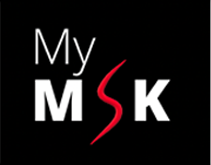Curious if steroid injections can ease tennis elbow pain? This article explains how a steroid injection for tennis elbow can provide quick relief from pain and inflammation.
Throughout this article, will use the term ‘Steroid’, ‘Cortisone’ or ‘Corticosteroid’ interchangeably, which are the same injected therapeutic substance
You’ll learn how it works, what to expect during the procedure, and potential risks and benefits.
Key Points
-
Tennis elbow, or lateral epicondylitis, is caused by repetitive arm movements leading to tendon inflammation, affecting anyone involved in such activities, not just athletes.
-
Steroid injections provide quick pain relief in Tennis Elbow.
-
Long-term treatment options such as prolotherapy and platelet-rich plasma injections may also offer sustained relief
Understanding Tennis Elbow
Tennis elbow, also known as lateral epicondylitis, is a condition that many athletes and non-athletes alike may experience. It often arises from a sudden increase in forearm use, leading to inflammation of the tendons due to overuse or repetitive motions. These motions are typically seen in sports like tennis, hence the name, but can also occur in everyday activities. The primary muscles affected are responsible for wrist and finger extension, with inflammation occurring near the outside of the elbow at the lateral epicondyle.
While tennis elbow is self-limiting and may improve by stopping the activity that causes it, understanding its root cause is crucial for effective treatment. The repetitive strain on the tendons around the elbow joint can lead to small tears and inflammation, causing significant discomfort and pain. It’s not just tennis players who are at risk; anyone involved in activities requiring repetitive arm movements can develop this condition.
Proper technique and equipment can make a significant difference. Whether you play tennis, golf, or engage in other sports, being mindful of how you use your arm and wrist can help prevent the onset of lateral epicondylitis. A well-fitted racket with a proper grip can also reduce the risk.
This section explains what tennis elbow is and the factors contributing to its development.
Symptoms of Tennis Elbow
The main symptom of tennis elbow is a persistent pain in the elbow joint that can make even the simple tasks feel excruciating. The pain often radiates from the outside of the elbow down to the forearm and wrist, making activities like gripping objects or shaking hands particularly painful. The discomfort can be so intense that even writing or lifting a cup of coffee can become a very painful task.
Tennis elbow is not to be confused with medial epicondylitis, commonly known as golfers elbow, which affects the inside of the elbow. While both conditions involve inflammation of the tendons, the pain distribution differs. Early identification of these symptoms can lead to more effective treatment.
If you experience persistent elbow pain, especially after repetitive wrist and arm movements, seek medical advice to confirm whether you have tennis elbow and to explore treatment options.
Diagnosing Tennis Elbow
Diagnosing tennis elbow typically involves a combination of taking the patient’s medical history and conducting a physical examination. During the physical exam, the doctor might apply pressure to the affected area and ask the patient to move their elbow, wrist, and fingers in various ways to assess pain and discomfort.
One of the hallmark signs of tennis elbow is tenderness on the outer part of the elbow, which is often coupled with pain that radiates from the elbow to the wrist. Patients may also find it challenging to hold onto objects firmly. These symptoms, combined with the patient’s activity history, can provide significant clues for diagnosis.
In some cases, especially if the pain is severe or doesn’t improve with initial treatment, doctors might use imaging such X-rays/MRI or ultrasound to rule out other conditions. These imaging tests help ensure that the pain isn’t caused by worse issues such as Arthritis, a Bone fracture or a Radial Collateral ligament injury
Accurate diagnosis is the first step towards effective treatment and sets the stage for discussing the role of Cortisone injections in managing tennis elbow.
Steroid Injections for Tennis Elbow
Cortisone injections are a common treatment for managing the pain associated with tennis elbow. These injections provide quick pain relief and improved function for a short duration, making them an ideal option for those suffering from acute symptoms.
One of the significant benefits of steroid injections is their ability to deliver rapid relief from pain, which can be particularly valuable for those who need immediate improvement.
These injections are effective due to their potent anti-inflammatory properties. Cortisone reduces swelling and discomfort in the elbow tendons by reducing the body’s inflammatory response.
This section will further explore how these injections work and the procedure involved in administering them.
How Cortisone Injections Work
Corticosteroid injections target inflammation directly at the site of pain, helping to reduce swelling and discomfort. This in turn reduces pain in the elbow joint.
This targeted approach makes them highly effective in providing short-term relief from the pain and swelling associated with tennis elbow.
However, it’s important to note that while Cortisone injections offer immediate relief, their effects are often temporary but they do allow a ‘window of opportunity’ for pain relief which allows effective physiotherapy or rehab.
Patients should be aware that these injections primarily address the symptoms rather than the underlying cause of the condition.
This understanding is crucial for making informed decisions about treatment options.
Procedure for Steroid Injection for Tennis Elbow
The procedure for administering Cortisone injections involves inserting a needle into the soft tissue around the extensor tendons of the elbow (Extensor Carpi Radialis Brevis Tendon) to deliver the medication directly to the inflamed area.
A local anaesthetic is often applied to numb the area around the elbow before the actual injection of Cortisone, minimising discomfort during the procedure. This combination of anaesthetic and steroid ensures that the patient experiences minimal pain during the injection.
After the injection, patients are typically advised to rest the elbow and may use ice the area to reduce any swelling or discomfort. It’s also important to follow any additional post-procedure care instructions provided by the healthcare provider to ensure the best possible outcome.
Understanding the procedure and potential risks of corticosteroid injections is crucial for making an informed decision.
Comparing Treatments for Tennis Elbow
When it comes to treating tennis elbow, corticosteroid injections are just one of several options available. These injections can provide immediate pain relief, making them a preferred option for managing acute symptoms.
Additionally, there are also other methods can help treat tennis elbow effectively.
Physiotherapy, focuses on exercises that improve strength and flexibility, often yielding good long-term results.
Platelet-rich plasma (PRP) injections have also gained recognition for offering good long-term pain relief and functional improvement and compare favourable with corticosteroid injections and other treatments.
Potential Risks and Side Effects
While Corticosteroid injections can be highly effective in providing pain relief, they are not without risks. Repeated high dose injections can lead to tendon damage or rupture, potentially worsening the condition over time.
In our experience at MyMSK Clinic, we find this risk to be more linked to repeated unguided high dose Cortisone injections directly into the ERCB tendon
We find Image guided low dose injections to be very effective in treating tennis elbow over a longer period. Image guidance is essential to ensure the Cortisone is ‘delivered’ into safe areas where this risk is minimised
This underscores the importance of using corticosteroid injections judiciously and under the guidance of an experienced Doctor.
Preventing Tennis Elbow
Preventing tennis elbow involves a combination of strength training, ergonomic practices, and proper technique.
Regular strength training for the forearm muscles, such as wrist curls and grip strengthening, is crucial for preventing this condition.
We have found certain exercises or poor exercise form in the Gym can sometimes cause Tennis elbow, hence an early consultation with a clinician is important if you are experiencing elbow pain during training in the Gym
Using the right equipment is essential. A good quality grip on your racket, and adjustments to make it fit your hand better, can significantly reduce the risk of developing tennis elbow. Ergonomic practices in daily activities, such as avoiding twisting movements and using tools that reduce strain on the elbow, can also play a significant role in prevention.
Consulting a physiotherapist for prevention strategies can be highly helpful for those whose work involves repetitive actions. By incorporating these exercise practices into your routine, you can significantly reduce the likelihood of developing tennis elbow and maintain a healthy, active lifestyle.
Summary
In summary, Tennis elbow is a common yet painful condition that can significantly impact one’s quality of life. Corticosteroid injections offer quick and effective pain relief when administered correctly under image guidance
Also consider treatment strategies such as physiotherapy and PRP injections, as this can help also help patients find a sustainable approach to managing their condition.
Preventing tennis elbow is equally important and can be achieved through strength training, proper equipment use, and ergonomic practices.
By understanding the condition, its treatments, and prevention strategies, individuals can take proactive steps to live pain-free and enjoy their activities to the fullest.
Frequently Asked Questions
What is tennis elbow?
Tennis elbow, or lateral epicondylitis, is an inflammatory condition affecting the tendons on the outside of the elbow, commonly resulting from overuse or repetitive motions. It is important to address this condition to prevent further discomfort and limitation in activities.
How are steroid injections administered for tennis elbow?
Steroid injections for tennis elbow are administered by inserting a needle into the tendon to deliver the medication directly to the inflamed area, typically using a local anesthetic for numbing. This targeted approach helps alleviate pain and reduce inflammation effectively.
How can I prevent tennis elbow?
To prevent tennis elbow, it is essential to engage in forearm strength training, utilise appropriate equipment, adopt ergonomic practices, and seek guidance on proper techniques. These measures will help reduce the risk of injury effectively.




